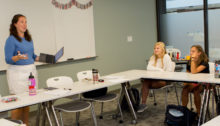Finding Common Ground: Teaching Politics in 2020
In my first Teaching US History post, I spoke about the concept of teaching students to “see both”–to realize that both the good and bad are tangled up in almost every topic in history or current event we study. I wrote: Seeing both starts with us as educators. Regardless of our own political and historical…

